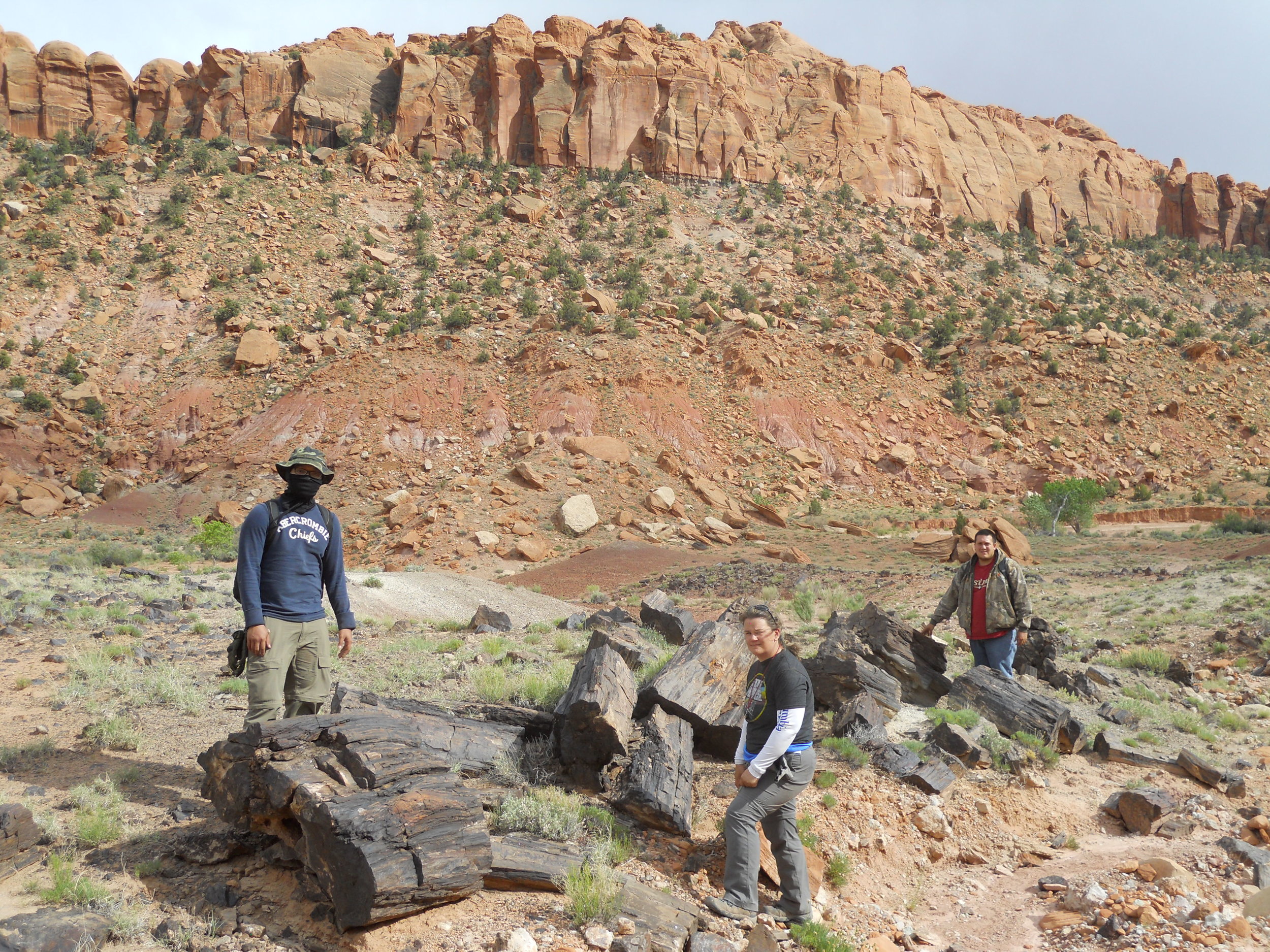My research interests lie in the beginning of the Mesozoic Era, the age of dinosaurs. This interval of time, called the Triassic Period, lasted from 252.17 to 201.3 million years ago. The Permian Extinction, which occurred 252 million years ago, was the largest mass extinction in the history of life. This extinction wiped out nearly all large land animals, most of which were therapsids, relatives of mammals. During the Triassic, new large land animals evolved to replace them. These included the archosaurs, the group of reptiles that included the first dinosaurs and relatives of crocodylians. By the end of the Triassic, dinosaurs had become the dominant land animals, and most crocodylian relatives and therapsids had gone extinct. These ecological changes occurred because of complex environmental changes that are only beginning to be understood.
The Upper Triassic Chinle Formation and Dockum Group of the western United States preserves a record of changing environments and ecosystems during the last 25 million years of the Triassic, during which time extinct relatives of crocodylians were the most common large land animals and dinosaurs were relatively small and rare. Work currently being conducted by myself and my colleagues is helping to clarify how changing environments impacted terrestrial ecosystems at the end of the Triassic Period in Texas, New Mexico, Utah, Arizona, and Colorado.
Stratigraphy of the Chinle Formation
The Chinle Formation consists of fluvial, lacustrine, and paludal deposits that formed across the western United States during the Late Triassic Period. These sedimentary rocks are best exposed in southern Utah, northern Arizona, and northwestern New Mexico, although outcrops also occur in southern Nevada and parts of Colorado. In Utah and Arizona, the Chinle Formation forms part of the spectacular geologic landscapes of public lands such as Petrified Forest National Park, Capital Reef National Park, and Grand Staircase-Escalante National Monument. In eastern New Mexico and western Texas, equivalent-age sedimentary rocks with the same fossils are assigned to the Dockum Group.
I am currently working with the National Park Service and Utah Geological Survey on a large-scale project revising the stratigraphy of the Chinle Formation throughout southern Utah, northern Arizona, and southern Nevada. We have two primary goals: 1) to revise lithostratigrpahic correlations and nomenclature, and 2) to detail vertebrate and plant biostratigraphy throughout the region. This work will clarify how changes in lithologic facies, which formed in particular sedimentary environments, relate to changes in the plant and animal biotas. So far, we have completed projects in Capital Reef National Park (Kirkland et al., 2014) and Zion National Park (Martz et al., 2015), with ongoing and planned projects being conducted in Grand Staircase-Escalante National Monument and Glen Canyon National Recreational Area in southern Utah (Martz et al., 2017), and Lake Mead National Recreational Area in Nevada. The ultimate goal is to link these study areas stratigraphically to Petrified Forest National Park, where lithostratigraphy, biostratigraphy, and chronostratigraphy has been explored in more detail than anywhere else in the Colorado Plateau (e.g. Martz and Parker, 2010; Parker and Martz, 2011; Martz et al. 2012; Atchely et al., 2013).
The Late Triassic Fauna and flora
My research also includes Late Triassic vertebrates, particularly archosaurs on the crocodylian line, which are called pseudosuchians ("soo-do-sook-ee-ans"). Aetosaurs ("ay-ee-toe-sores") were heavily armored pseudosuchians that were some of the most common land animals world-wide during he Late Triassic. They were characterized by peculiar little heads with pointy snouts and small teeth, and by heavily armored bodies covered with osteoderms (literally "skin bones"), the same kind of bony plates that cover the back of the modern day crocodylians. In aetosaurs, the osteoderms were especially large compared to most pseudosuchians, and had patterns and shapes distinctive to different species. In northern Arizona near Petrified Forest National Park, I am currently excavating a large bone bed containing several skeletons of an aetosaur called Typothorax. A variety of other large psedosuchians and crocodile-like archosaurs called phytosaurs also roamed the western United States during the Late Triassic. These co-exited beside giant amphibians called metoposaurs and mammal-like therapsids.
The most famous Late Triassic plants from the western United States are the giant petrified logs that give Petrified Forest National Park its name. Large petrified logs are also known from Grand Staircase-Escalante National Monument. These trees are conifers, distant relatives of pines, redwoods, and firs. Other Late Triassic plants known from the region include giant horsetails, primitive plants that are sometimes found preserved in the upright position that they died in. Other fossils known from the Chinle Formation and Dockum Group include ferns, cycads, and bennettitales, none of which produced flowers or fruits.








